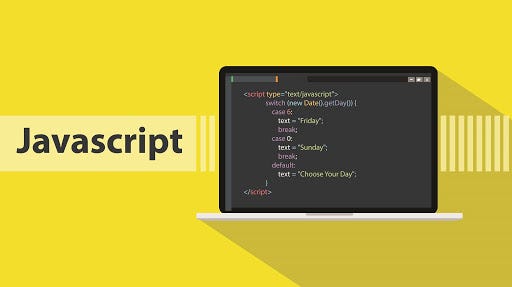Most useful JavaScript methods You must need to know
In this article, we will focus on some of the important JavaScript methods. The sections will be broken down by module.

Javascript String Methods
1. charAt()
When we want to access the individual characters in a string.
const name = "Thor"
console.log(name.charAt(0))
//TIn another way, we also find a specific character in our string. This method is like an array value finding.
const movie = "Thor"
console.log(movie[0])
//T2. concat()
const fristName = "Jon";
const lastName = "Doe";
console.log(fristName.concat(" ",lastName))3.includes()
Includes method checks if a specific value exists or not, and it returns a boolean value.
Note: The includes methods are case-sensitive.
const country = "Bangladesh is my Born country"
console.log(country.includes("Bangladesh")) //true
console.log(country.includes("bangladesh")) //false4. endsWith()
This method helps to check which sentence uses in a substring in the last position.
Note: The endsWith method is also case-sensitive.
const dialog = "I will must tech you who am i?"
console.log(dialog.endsWith("i?")) //true
console.log(dialog.endsWith("i")) //false5.indexOf()
This indexOf method searches for a specified value, and if a value exists then, return values position index, otherwise return -1 value if not found.
const para = 'The quick brown fox';
console.log(para.indexOf('quick')) //4
console.log(para.indexOf('Jump')) //-16.lastIndexOf()
The lastIndexOf() method returns the position of the last occurrence of a specified value in a string.
Note: The lastIndexOf method also is case-sensitive.
const list = ["Mango", "Apple", "Mango"];
list.lastIndexOf("Mango"); //27.replace()
The replace method replaces characters in a string with another group of characters.
const grettings = "Welcome to Dhaka";
grettings.replace("Dhaka","Noakkhali")
//"Welcome to Noakkhali"8.splice()
This method returns a new substring based on the indexes provided.
const sing = "I am a disco dancer"
console.log(sing.slice(0,5))// I am9.split()
Using substrings to split a string into an array. It returns the new array.
const ask = "How are you?"
const res = ask.split(" ") //["How", "are", "you?"]10.startsWith()
This method returns the boolean value if the string begins with a substring.
const myName = "I am Jobayer Hossain"
myName.startsWith("I")//true
myName.startsWith("am")//false11.substr()
This method accepts two input values as the number and extracts a string with a beginning number to end several target string positions.
const helloMsg = "Hello How are you?"
const res = helloMsg.substr(1,4) //"ello"12.toLowerCase()
It converts a string to lower case.
const str1 = "Hellow World"
const str1Res = str1.toLowerCase()//"hellow world"Note: The toLowerCase() the function doesn't accept any parameters. and does not changers the original string.
13.toUpperCase()
The method transforms a string to uppercase letters.
const str2 = "Hellow World"
const str2Res = str2.toUpperCase() //"HELLOW WORLD"Note: The toUpperCase() method does not modify the original string.
14.trim()
The trim()the method removes all whitespace on the string at the beginning and ending positions.
const str3 = " Hellow World! "
const str3Res = str3.trim() //"Hellow World!"Note: The trim() method does not modify the initial string, and it does not accept any parameters.
15.trimStart()
This method removes whitespace only from the start.
const str4 = " Hello World! ";
const str4Res = str4.trimStart() // "Hello World! "16.trimEnd()
This method removes whitespace only from the end.
const str5 = " HelloWorld ";
const str5Res = str5.trimEnd() // " HelloWorld"
Javascript Number Methods
1.isNaN()
This method returns true if the value is not a number.
console.log(isNaN(123)) // false
console.log(isNaN(true)) // false
console.log(isNaN(true)) // falseconsole.log(isNaN("Hello")) // true
console.log(isNaN("2020/4/13")) // true
console.log(isNaN(undefined)) // true
console.log(isNaN(NaN)) // true2.parseFloat()
The function parses a string and returns a floating-point number.
console.log(parseFloat("40")) //40
console.log(parseFloat(" 50.55 ")) //50.55
console.log(parseFloat("My ID 40")) //NaN3.parseInt()
This function parses a string and delivers an integer.
console.log(parseInt("10")) //10
console.log(parseInt(" 30.90")) //30
console.log(parseInt("36 10 20")) //36
console.log(parseInt("ID 404")) // NaN
JavaScript Array methods
1.concat()
The concat function is used to join two arrays and returns a new array.
const marvelHeros = ["Thor","Ant-man"]
const dcHeros = ["WonderWoman","Bat Man"]
const joniArrays = marvelHeros.concat(dcHeros)
//["Thor","Ant-man", "WonderWoman","Bat Man"]2.every()
This method tests if all elements in an array pass a test.
const agesArray = [32,42,53]
const hasAudlt = agesArray.every(age=> age < 18) //false3.filter()
This method generates a new array with all array elements that pass a condition.
const numberArrays = [5,9,12,22,53]
const filterdLessThen20 = numberArrays.filter(num => num < 20)
//[5, 9, 12]4.find()
This function returns the value of the array that passes a condition.
const districts = ["comilla","Noakhalli","Lakshimipur"]
const myDistrict = districts.find((district) => {
return district == "Lakshimipur"
})
//"Lakshimipur"5.findIndex()
This method returns the index of the first item that passes a test.
const array1 = [5, 12, 8, 230, 44];
const lessThen15 = array1.findIndex(num => num > 15) //36.forEach()
forEach method work looks like a for loop. It loops through all the elements in the array and returns a single piece of the element.
const friendsArray = ["Jon", "Doyt", "cherry"];
const friendsName = friendsArray.forEach(name => console.log(name))
// "Jon"
// "Doyt"
// "cherry"7.indexOf()
The indexOf() function accepts a parameter and the index of the item or -1 if it does not exist.
const bestFriends = ['ant', 'bison', 'camel', 'duck', 'bison'];
console.log(bestFriends.indexOf("bison"))8.join()
The join method concats all array elements into a single string with a separator.
const arrays3 = ['Fire', 'Air', 'Water'];
console.log(arrays3.join())
// "Fire,Air,Water"9.map()
The map() function it’s loop throw all array element and return a new array based on a transformation with each item.
let numsArray = [1, 2, 3, 4];const singleValue = numsArray.map((num) => num + 1);console.log(singleValue);//[ 2, 3, 4, 5 ]10.lastIndexOf()
The lastIndexOf() method works like the indexOf method but the main difference between indexOfmethod search form beginning to end, and lastIndexOf() method searches end to beginning.
const movies = ["Avangers", "Thor","Ant Man", "Thor"];console.log(movies.lastIndexOf("Thor"));//311.pop()
The pop() method removes the last elements from the array.
const movies = ["Avangers", "Thor", "AntMan", "SpiderMan"];
// ["Avangers", "Thor", "AntMan", "SpiderMan"];movies.pop();
//[ 'Avangers', 'Thor', 'AntMan' ]12.push()
The push method adds an element to the end of the array position and returns a new array.
const movies = ["Avengers", "AntMan", "SpiderMan"];
// ["Avengers", "AntMan", "SpiderMan"];movies.push("Thor");
// ["Avengers", "AntMan", "SpiderMan", "Thor"];13.reduce()
The method does a function on every element of the array, occurring in a single amount value.
const number = [1, 2, 3, 4];const sum = number.reduce((accumulator, currentValue) => {
return accumulator + currentValue;
});console.log(sum); //1014.reverse()
The reverse method reverses the index of the element in the array.
const number = [1, 2, 3, 4];const reversed = number.reverse();console.log(reversed); //[ 4, 3, 2, 1 ]15.shift()
The shift method removes the first element in an array.
const friends = ["Nahid", "Sagor", "Jahid"];friends.shift();console.log(friends); //[ 'Sagor', 'Jahid' ]16.slice()
The slice method accepts two parameters starting and ending positions. it returns a new array without the starting and ending position elements.
const candidate = ["Sagor", "Jahid", "JonDoe"];const selectedCandidate = candidate.slice(0, 2);console.log(selectedCandidate); //[ 'Sagor', 'Jahid' ]17.sort()
The sort() method sorts elements in an array with order base. But we can pass a callback function to define which patters sorted our data.
let numbers = [4, 2, 5, 1, 3];numbers.sort((a, b) => a - b);console.log(numbers); //[ 1, 2, 3, 4, 5 ]18.splice()
The splice method accepts a minimum of 2 parameters index and how many elements remove from an array. This function mutates the array.
const months = ["Jan", "March", "April", "June"];months.splice(3, 0, "Feb");console.log(months); //[ 'Jan', 'March', 'April', 'Feb', 'June' ]19.unshift()
The unshift method adds elements in the beginning position of an array and returns a new array length.
let numbers = [2, 3, 4];numbers.unshift(1);console.log(numbers); //[ 1, 2, 3, 4 ]
JavaScript Object methods
1.Object.assign()
Create a new object from multiple objects.
const person = { name: "Jobayer Hossain", id: 23 };const address = { city: "Dhaka", age: 35 };const info = Object.assign(person, address);console.log(info);//{ name: 'Jobayer Hossain', id: 23, city: 'Dhaka', age: 35 }2.Object.freeze()
The Object.freeze method freezes all object all properties.
const person = {
name: "Jon Doe",
designation: "Front-End Developer",
skill: {
design: "Photoshop",
codeing: "Javascript",
},};Object.freeze(person);
person.name = "Jobayer Hossain";
person.skill.design = "Figma";
console.log(person);//{
name: 'Jon Doe',
designation: 'Front-End Developer',
skill: { design: 'Figma', codeing: 'Javascript' }
}3.Object.keys()
Object.keys() returns all the keys of an object.
const person = {
name: "Jobayer Hossain",
age: 21,
role: "Front-End Developer",
skill: "HTML CSS JS React",
};const ObjKeys = Object.keys(person);
console.log(ObjKeys);
//[ 'name', 'age', 'role', 'skill' ]4.Object.values()
Object.values() returns all the values of an object.
const person = {
name: "Jobayer Hossain",
age: 21,
role: "Front-End Developer",
skill: "HTML CSS JS React",
};const ObjValue = Object.values(person);
console.log(ObjValue);//['Jobayer Hossain',21,'Front-End Developer','HTML CSS JS React']
JavaScript Math
1.Math.abs()
Math.abs() method returns the absolute value of a number .
console.log(Math.abs(5 - 2)); //3
console.log(Math.abs(5.9 - 5.1)); //0.80000000000000072.Math.sin()
This method returns a numeric value within -1 and 1, which describes the sine in radians.
console.log(Math.sin(1)); //0.8414709848078965console.log(Math.sin(-1)); //-0.8414709848078965console.log(Math.sin(0)); //02.Math.cos()
The cos() method returns the cosine of a number.
const getRadius = (a, b) => {return Math.cos(a) * b;};console.log(getRadius(1, 10)); //5.4030230586813983. Math.exp()
The exp() method returns e^[number].
console.log(Math.exp(5)); //148.4131591025766console.log(Math.exp(6)); //148.41315910257664.Math.floor()
floor() method rounds a number down.
console.log(Math.floor(5.0524352345)); //55.Math.log()
The log() method returns the common logarithm of a number.
console.log(Math.log(4)); //1.38629436111989066.Math.min()
The Math.min() method accepts a value as a parameter and it returns the lowest value.
console.log(Math.min(5, 10)); //5console.log(Math.min(87, 210)); //877.Math.max()
The Math.max() method accepts a value as a parameter and it returns the highest value.
console.log(Math.max(5, 10)); //10console.log(Math.max(87, 210)); //2108.Math.random()
Respond to a random number between 0 and 1.
console.log(Math.random()); //0.9671211951447136console.log(Math.random()); //0.8787034350662186console.log(Math.random()); //0.23736252608868499.Math.round()
The round() method rounds a number.
console.log(Math.round(2.9)); // 3console.log(Math.round(2.5)); // 3console.log(Math.round(2.4)); // 210.Math.sqrt()
The sqrt() method returns the square root of a number:
console.log(Math.sqrt(16)); //4console.log(Math.sqrt(81)); //9